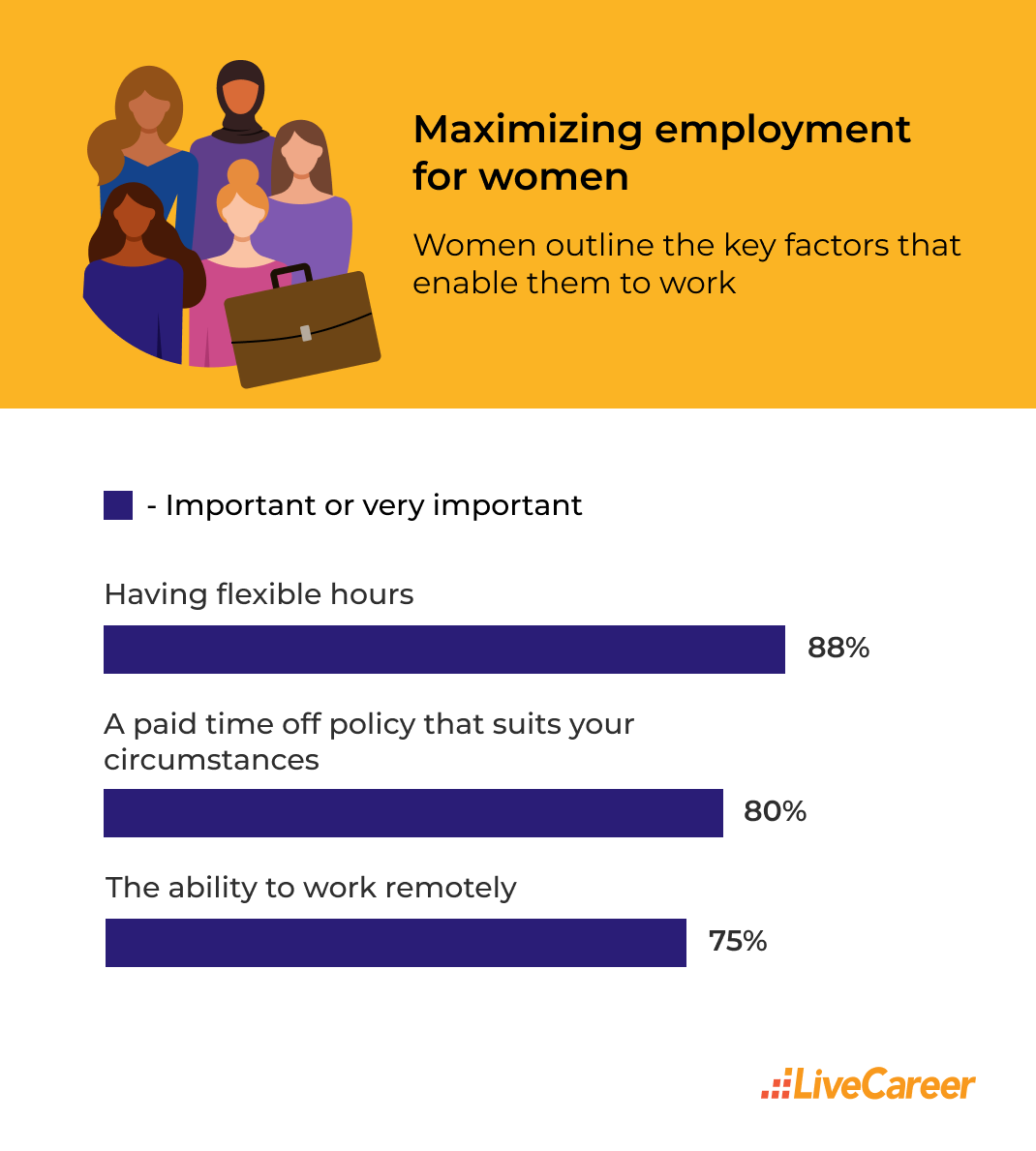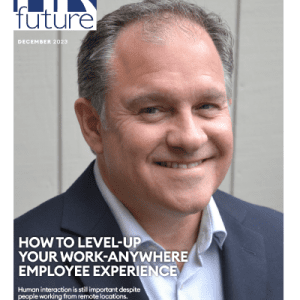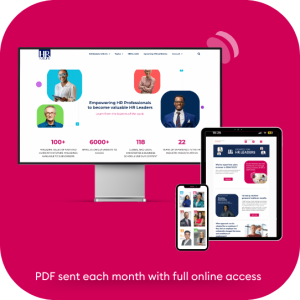The Bank of America estimates that gender inequality has cost the world 70 trillion dollars since 1990. Yes, 70 trillion, a 7 followed by 13 zeroes. More than three times America’s GDP in 2020.
That’s 70 trillion reasons why gender equality should be the aim of every American employer. Not to mention that it’s a basic human right.
But empowering women at work isn’t just the right thing to do. Research shows that maximizing the participation of women in the workplace can significantly improve company performance.
- Gender diverse teams have higher sales, profits, and revenues compared to teams dominated by men.
- Having a higher proportion of women in a workplace is linked with greater job satisfaction, while also being linked with less burnout.
In short, helping women realize their full potential in the labor market is good for everyone.
Yet, women still face barriers that can make realizing that potential all but impossible.
So what can be done to fully empower women at work?
The best way to answer that question is to ask working women themselves. We surveyed 350+ American women to discover what they need to maximize their employment opportunities.
And what women need to succeed is surprisingly simple. Here’s what the women of America told us.
Caring for others—a barrier to employment
We said what women need to succeed is simple. So here’s a start. Two words—
Child care.
Lack of appropriate child care provision limits women’s access to paid work. Research dating back decades backs this up, not to mention it’s just a no-brainer.
If you’ve got no options to care for the kids, then work becomes a struggle. Simple.
But for some hard facts, take a look at some findings from a 2018 survey conducted by the Center for American Progress:
Moms who couldn’t access a child care program were significantly less likely to be employed, but for fathers the impact on employment was negligible.
Moms also said that better access to childcare would help boost their pay by finding a better job, applying for a promotion and working more hours.
And it’s indisputable that the burden of care still falls disproportionately on women. Worldwide, women perform more than 75% of all unpaid care work.
But this isn’t just limited to caring for children. Caring for adults, mainly the elderly and people with disabilities, is another major burden.
In the U.S., more than 75% of caregivers for adults are women and women are more likely than men to stop working to care for their elders.
When it came to our own respondents, 48% said they had children aged 16 or younger. With 33% of them saying they were single parents.
And 28% of our respondents said they were caregivers for adults.
At this point, it’s worth noting that for many women, the burden of care continues throughout their working lives.
The caring grind kicks off by caring for their kids and then moves on to responsibilities for aging parents. So for many women there’s no let up as their career progresses.
There’s no denying it. Access to care for loved ones can be a game changer for women throughout their working lives.
So let’s take a look at just how important it is.
A helping hand—how better access to care empowers women at work
Our respondents who had caring responsibilities were overwhelmingly supportive of better access to care.
With this level of agreement, the conclusion is obvious.
Accessible and affordable care can transform the employment opportunities of American women.
 We asked women with children if better access to care for their loved ones would empower them in employment.
We asked women with children if better access to care for their loved ones would empower them in employment.
The answer was a resounding “yes!”
More than 8 in 10 of our respondents considered access to affordable childcare to be an important factor in enabling them to be employed. The results couldn’t be clearer.
And take a look at the other positive effects of accessible and affordable child care:
- 80% said it would have a positive impact on their own well-being.
- 78% said it would help them to pursue new job opportunities.
- 71% said it would allow them to earn more money.
- 70% said it would allow them to pursue additional training or education.
Yet half of U.S. families struggle to access child care at all. And according to research by the Society for Human Resource Management (SHRM):
- Only 11% of American employers have a child care referral service.
- And a mere 4% offer subsidized or unsubsidized child care.
So women with children need access to affordable childcare, but by and large it simply isn’t available.
Which makes no sense, because putting aside the fact that equitable access to child care is a coup for gender equality, it’s great for business too.
Just look at the numbers.
Child care challenges cost American businesses an estimated $12.7 billion annually.
The total cost of lost earnings, productivity, and revenue due to poor access to childcare is $57 billion annually.
Increased investment in child care could yield $70 billion per year and boost GDP by 1.2% by enabling 1.6 million more mothers to enter the workforce.
That’s an impressive ROI in anyone’s book.
Now let’s take a look at the importance of accessible and affordable care for elders and people with a disability.
For women with caring responsibilities for adults, the results were even more striking.
Fully 85% of them said access to affordable care was important in enabling them to be employed.
Again, there’s no arguing. Women need access to care for their loved ones to boost their job opportunities.
Here are the other positive effects:
- 87% said it would have a positive impact on their own well-being.
- 79% said it would help them to pursue new job opportunities.
- 78% said it would allow them to pursue additional training or education.
- 72% said it would allow them to earn more money.
Now, compared to child care, there’s much less known about the impact of caring for elders and people with disabilities.
It just hasn’t attracted the same attention as the challenges posed by child care.
But a 2019 Canadian study shows the results can be just as damaging. Here’s what our friends north of the border discovered:
Women are 73% more likely to permanently leave a job, and five times more likely to switch to part-time work due to caregiving responsibilities.
And we can also put a dollar figure on the estimated losses caused by a lack of access to adult caregiving.
Yes, reducing it to a balance sheet sounds brutal. And the human side of the equation should be paramount.
But—
There’s no denying that the bottom line drives business and government decision-making. So here goes.
We’re going to extrapolate from the Canadian study:
- It reported a loss of 164,000 work hours per week due to caregiving responsibilities. That’s 8.5 million hours per year.
- The population of the US is ~8.7 times that of Canada. Assuming similar work hour losses, that gives us around 74 million hours lost annually.
- Assuming a 40-hour work week, the average hourly wage for Americans is currently $24.60, so—
An estimated 1,820,400,000 (one billion eight hundred twenty million four hundred thousand) dollars in earnings annually are lost due to caregiving responsibilities.
When you factor in the losses in productivity to business, there’s no denying it—
Fixing this problem would allow more women to enter the workforce and fuel economic growth for everyone.
It’s such a simple fix. Help women to access care for their loved ones in an affordable and accessible manner.
Businesses and policymakers take note. The potential is there to transform women’s lives and boost prosperity for all.
And a message for American men. Women need your help! Roll up your sleeves and ask the women in your life what you can do to help shoulder the burden.
One of our respondents put it better than we ever could:
Knowing that my loved one is taken care of in the best way possible is first and foremost for me. Once I have that taken care of, then I can focus on myself and the things I want to achieve personally and professionally. If my loved one has all the resources they need, then I can solely dedicate myself to being the best employee and person I can be. Flexible hours and a good PTO policy would be a great help to me.
But that’s not all there is to it. We also identified some other quick wins when it comes to empowering women at work.
Perks and policies—how employers can help women at work
Improving access to affordable care will take a concerted effort from all levels of government and business alike.
Yes, it’ll be challenging, but the benefits will be incalculable.
Here’s the thing, though. There are also some measures employers could take immediately to get the ball rolling.
All it takes is a helping hand in terms of working practices.
We researched the most commonly cited female-friendly employment policies and asked our respondents for their opinions.
Here are the three major factors that employers should consider:

The key here is flexibility.
That’s all there is to it. Flexibility. Allow women to balance work with other responsibilities.
Here’s what our respondents considered to be important in helping them achieve that balance:
- 88% considered flexible working hours to be important.
- 80% considered a paid time off policy that suits their circumstances to be important.
- 75% considered the ability to work remotely to be important.
Removing that rigidity from the workplace is the easiest way to help women boost their presence in the labor market.
And this benefits everyone.
So what else do women need to make the most of job opportunities? We’d argue that nothing beats a little friendly advice, and that’s what we looked at next.
Words of wisdom—What career advice do women need
First things first, we don’t mean pointless mansplaining. That’s something women definitely don’t need.
We’re talking about genuinely useful advice from career experts. We wanted to know what would help women reach their full potential.
Luckily for us, it turns out that the expert advice we pride ourselves on at LiveCareer is just what the doctor ordered.

Advice on finding employment that suits their personal circumstances came out on top, with 88% of respondents saying they’d find it useful.
Even more proof that when it comes to helping women at work, flexibility, and personalization are key.
Our findings showed that women also appreciate advice on how to nail their job search by presenting themselves well to employers.
Here are the other tips our working women would find useful.
- 86% would like advice on what skills employers are looking for.
- 80% would like advice on resume writing and how to answer interview questions.
- 70% would like advice on general interview skills such as what to wear, and body language.
We also got some great feedback from our respondents.
Here’s some more about what they’d find useful, in their own words. And yes, we are taking note!
“Videos of mock interviews and business etiquette.”
“How to approach questions regarding salary expectations from employers would be helpful. Ways to ensure an employer that simply because I am female and have kids is not a burden to the company, and I am still worth hiring.”
“For me, the best advice would be how to balance work and home life and how to be effective in both areas.”
“Definitely how to answer interview questions is the most helpful advice I would ask for. There have been a lot of times where I didn’t know how to sell myself in some questions that I have been asked. I also think that advice on how to prepare for interviews outside of researching a company would be extremely valuable.”
Conclusion
In 2021, women are still underutilized at work and face considerable barriers to career progression.
Of our own respondents, 43% considered themselves to be underemployed. That’s where a person is working part-time when they want to work full-time, and/or working in a job they’re under qualified for.
30% said they became underemployed because of the COVID-19 pandemic, and 31% said they became unemployed at some point due to the pandemic.
Analysis carried out in January of this year revealed that women’s labor force participation had hit a 33-year low.
So it’s clear that there are a lot of underutilized women out there, and many who can’t currently enter the labor force at all.
And a quick reminder of the financial impact. It’s estimated that gender inequality has cost the world 70 trillion dollars since 1990.
Gender inequality in employment makes the world a poorer place, both in human and economic terms.
But the solution is simple. Along with fighting the entrenched inequalities in society, women need to be given the flexibility and advice they need to fully participate in employment.
It’s something that benefits everyone.
And at LiveCareer we’re proud to play a part in helping women make the most of every opportunity the world of work has to offer.
See more resources in our Women at Work Special Report.
Methodology
Our findings were obtained by surveying 354 American women. They were asked questions about what would help them to maximize their employment opportunities. These included yes/no questions, scale-based questions relating to levels of agreement with a statement, questions that permitted the selection of multiple options, and questions that permitted open responses.
Sources
- BofA Global Research., “Everybody Counts! Diversity & Inclusion Primer”
- Bureau of Economic Analysis., “Gross Domestic Product, 4th Quarter and Year 2020 (Advance Estimate)”
- Bureau of Labor Statistics., “Median Usual Weekly Earnings of Full-Time Wage and Salary Workers by Sex, Quarterly Averages, Seasonally Adjusted”
- Center for Creative Leadership., “Women in the Workplace: Why Women Make Great Leaders & How to Retain Them”
- Ehrlich, U., Möhring, K. & Drobnič, S., “What Comes After Caring? The Impact of Family Care on Women’s Employment”
- Family Caregiver Alliance., “Caregiver Statistics: Demographics”
- Germano, M., “Women Are Working More Than Ever, But They Still Take On Most Household Responsibilities”
- National Women’s Law Center., “Resource: Another 275,000 Women Left the Labor Force in January”
- OECD., “Entrenched social norms prevent the equal distribution of caring responsibilities between men and women”
- Piszczek, M., “Reciprocal Relationships Between Workplace Childcare Initiatives and Collective Turnover Rates of Men and Women”
- Schochet, L., “The Child Care Crisis Is Keeping Women Out of the Workforce”
- SHRM., “2019 Employee Benefits”
- Smith, P., Cawley, C., Williams, A., & Mustard, C., “Male/Female Differences in the Impact of Caring for Elderly Relatives on Labor Market Attachment and Hours of Work: 1997–2015”
Weronika Cekala is a digital writer with expertise in communication, language localization and journalism. At LiveCareer, she creates data-based content that promotes innovative solutions for job-seekers and hiring professionals. You can find her on LinkedIn.
This article first appeared on LiveCareer.









